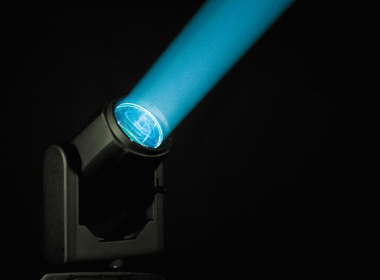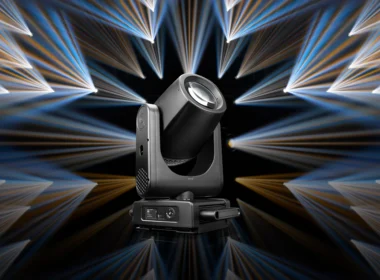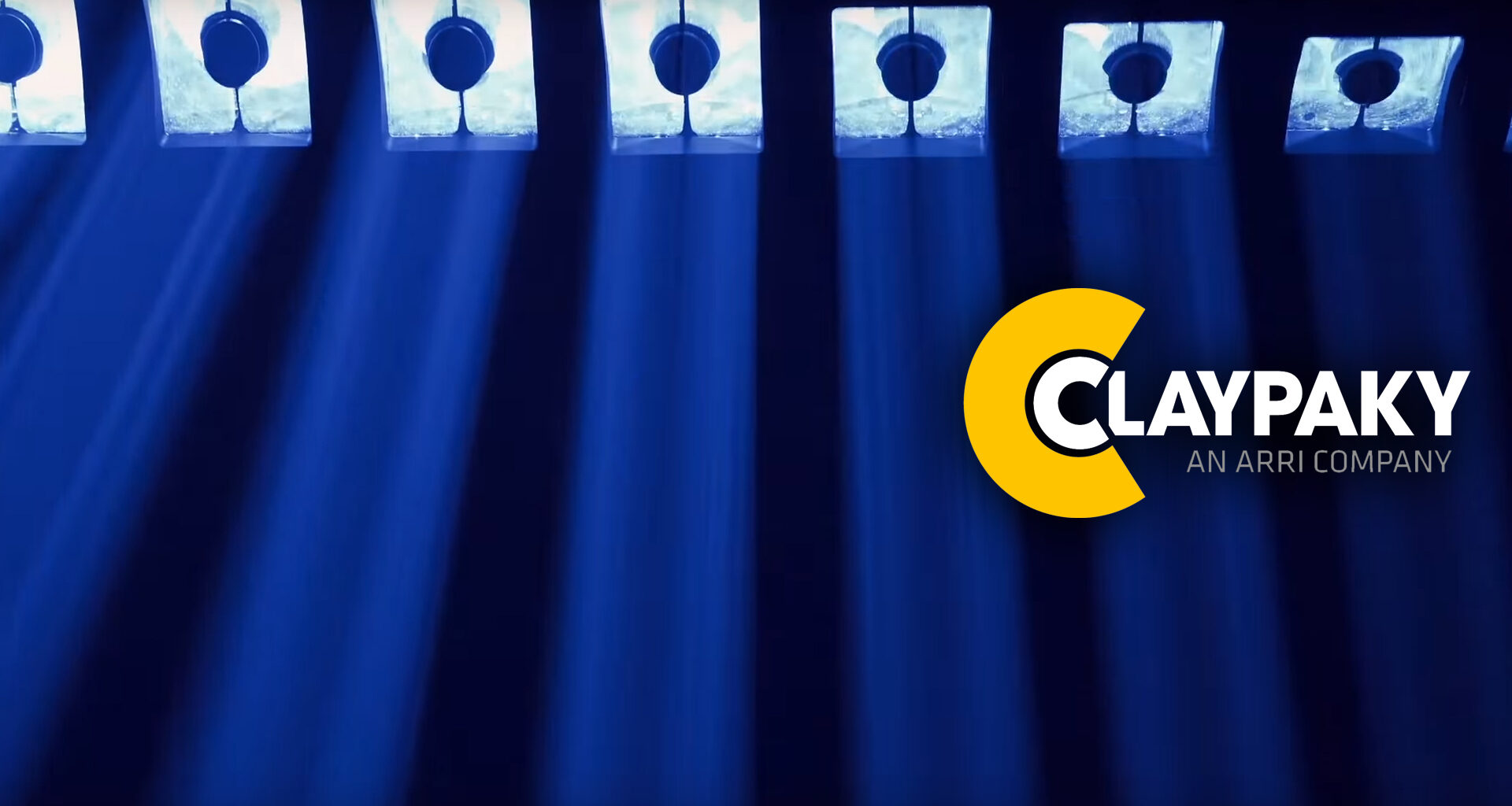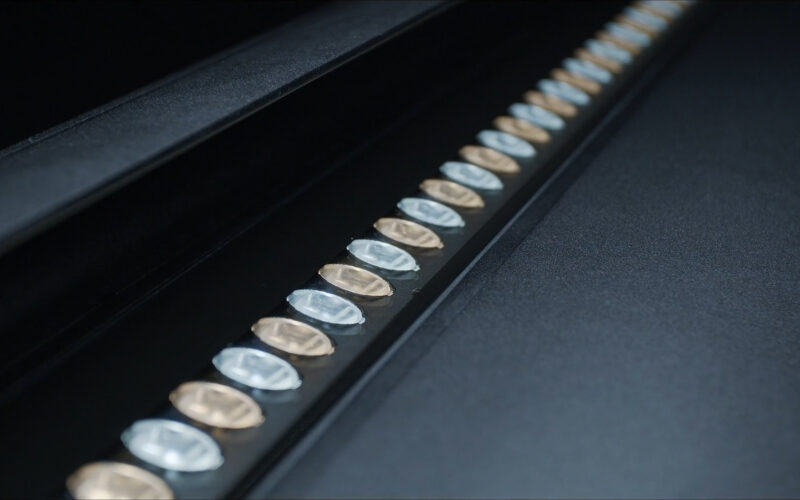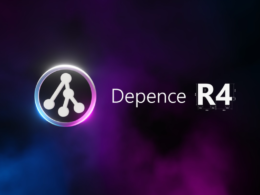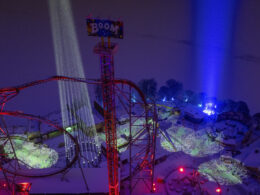Jak mówi o sobie producent: „Claypaky zawsze było znane ze swoich umiejętności badawczych i innowacyjnych, dzięki którym często wprowadzało na rynek oprawy i rozwiązania, które zrewolucjonizowały świat oświetlenia rozrywkowego”. – tłumacząc translatorem z angielskiego.
Można się z tym zgodzić po części. Producent ma to wyczucie, że pomiędzy „kolejnym urządzeniem” wypuszcza na rynek urządzenia z innowacyjnymi funkcjami, które zostają entuzjastycznie przyjęte. Tak po kultowym Sharpy dostaliśmy K10, a po K10 dostaliśmy Tamborę, koło się kręci.
Tym razem chciałbym Wam jednak przedstawić ciekawe urządzenie z segmentu ruchomego bara LED. Dosyć modny temat ostatnio wśród producentów, więc przyjdzie czas na podjarkę w produkcjach za jakieś 2 lata.
Optyka i moc
Ale dobra, do rzeczy, przedstawiam Wam Claypaky Volero Wave. Czyli wspomniany LED Bar wyposażony w 8 niezależnych oczek RGBW o mocy 40W. Optyka została podana na poziomie 2.9°, więc możemy bardziej zakwalifikować to do „BEAM” Bara. Tyle zróżnicowanych urządzeń na rynku, że nie wiem już jak to nazywać. Warto zwrócić uwagę na „czapeczkę” przy każdej soczewce dzięki czemu wiązka beam jest „lekka” i „czysta”. To zabrzmiało trochę jak „szeroka scena” w dźwięku.
Trzeba przyznać, że sama oprawa wyróżnia się już pod kątem wizualnym. Wynika to z tego, że każde oczko to oddzielna oprawa z możliwością ruchu w tiltcie którego zakres to 220°. Dzięki swojej konstrukcji urządzenie możemy łączyć w nieskończoną linię pixeli, ale w dzisiejszych czasach to już chyba standard przy nowych urządzeniach „tego typu”. Dodatkowo Volero jest kompatybilny z Claypaky Panify, czyli ruchomą podstawą która dodaje stałym urządzeniom możliwości nieskończonej rotacji w panoramie.
Sterowanie
Do sterowania dostajemy wszystkie znane nam protokoły, czyli DMX, Art.-Net, RDM, sACN zaś samo urządzenie dysponuje kilkoma trybami DMX. W nowej wersji, od stycznia 2023, dostajemy 3 podstawowe tryby takie jak standard, shape i advanced. Dają one różne możliwości sterowania efektami na warstwach, makroski i inne cuda wianki. Dodatkowo urządzenia posiada coś takiego jak Pixel Engine. Jeśli pozostanie on wyłączony wtedy kanały kolorów działają symultanicznie zgodnie z podstawowymi trybami. Jeśli zaś zechcemy bawić się w pixel mapę to dodatkowo dostajemy możliwość uruchomienia tegoż silnika w trybie RGB lub RGBW – takie urządzenie w urządzeniu trochę. Chwilę mi zajęło, żeby rozgryźć to po protokole. Tutaj zostawiam Wam link, żeby podejrzeć sobie jak to wygląda od strony kanałów.

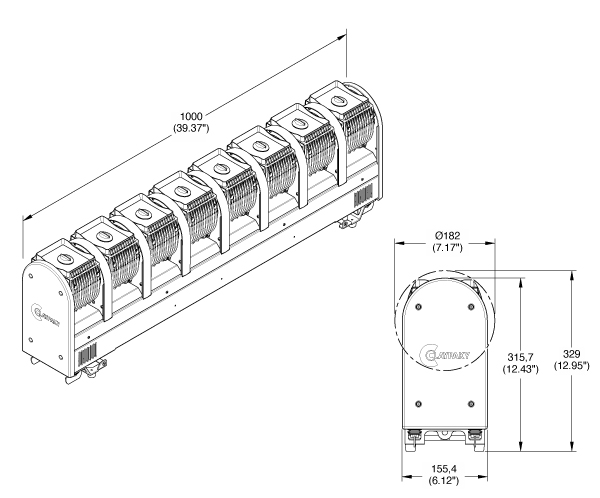
Co do fizycznych aspektów to urządzenie ma metr długości i za lekkie nie jest, bo waga oscyluję w granicach 21kg. Volero posiada 5 pinowe złącza XLR IN/Thru oraz RJ45 IN/OU, zasilanie odbywa się za pomocą PowerCon Tru1 IP65 choć samo urządzenie dostało klasę szczelności IP20 (o klasach szczelności piszemy tutaj).
Myślę, że wartym wspomnienia na koniec jest również możliwość aplikowania akcesoriów taki jak filtry Frost zmieniające kąt wiązki, dostępne w 3 rozmiarach – 1°/2°/3.5°. A po więcej szczegółów oczywiście zapraszam na stronę producenta lub dystrybutora.
PS Chauvet ma urządzenie w tym samym segmencie, ale przyjrzymy mu się następnym razem.
Manufacturer: CLAYPAKYDistributor: Prolight Ltd.




